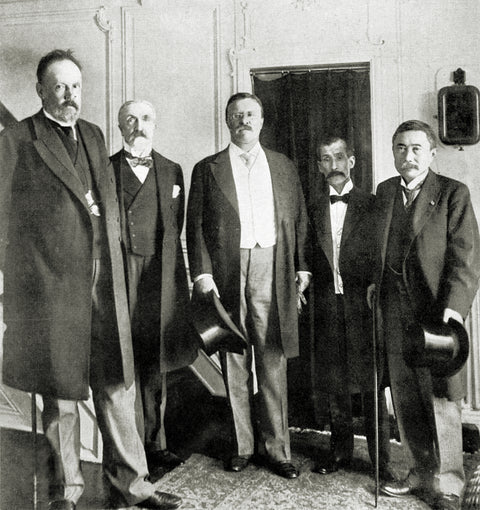
When the ‘Rough Rider’ Became the Peacemaker
Theodore Roosevelt owed much of his initial political success to the public image of wartime bravado surrounding his July 1, 1898, horseback charge up San Juan Heights, near Santiago de Cuba, Cuba, amid the Spanish-American War. In 1905, though, the bold “Rough Rider” found himself in the role of peacemaker amid the biggest war yet of the nascent century. He would earn a Nobel Peace Prize for his efforts.
The 1904–05 Russo-Japanese War pitted the rival empires against one another in a bid for territory in East Asia. Russia appeared to be the early favorite, as it seized frontiers in northern China. But a combination of technological prowess and overwhelming naval power gave Japan the upper hand as the conflict progressed.
President Roosevelt, whose “speak softly and carry a big stick” diplomatic style had won him popular support, watched nervously from the sidelines. Though he initially backed Japan, Roosevelt grew increasingly concerned about the possible effects of an emergent Japanese empire on American ambitions in the Pacific. For their part, the Japanese and Russians both recognized the human and material costs of the conflict were unsustainable (each would suffer nearly 100,000 casualties by war’s end). With such factors in mind Roosevelt quietly reached out to the warring empires, raising the possibility of peace.
Finally, in August 1905 Russian and Japanese representatives met in Portsmouth, N.H., to iron out a deal. In the above photo Roosevelt stands between the leaders of the respective delegations — Count Sergei Witte of Russia (far left) and Komura Jutaro, foreign minister of Japan (second from right). The resulting treaty brought peace at the cost of allowing Japan to annex Korea. As with most such compromises, it proved deeply unpopular in both Russia and Japan.
The real winner when the dust had settled was Roosevelt, who earned international praise for his deft handling of the settlement and the United States a position of global respect and authority.
historynet magazines
Our 9 best-selling history titles feature in-depth storytelling and iconic imagery to engage and inform on the people, the wars, and the events that shaped America and the world.
